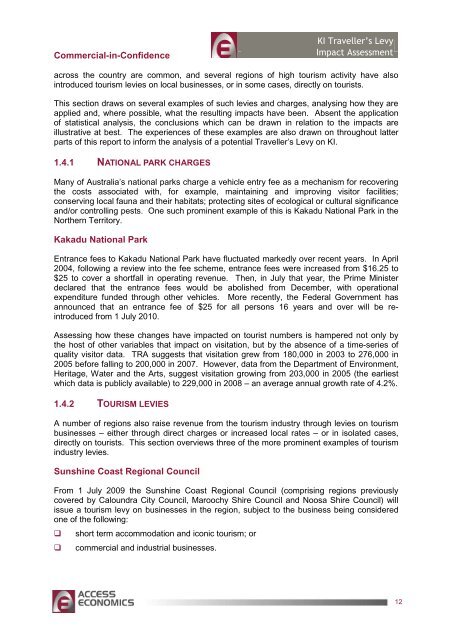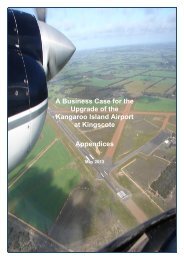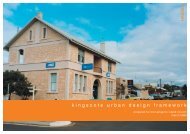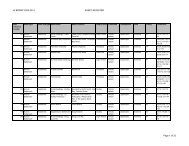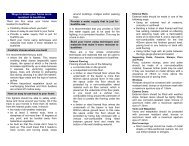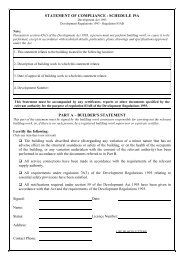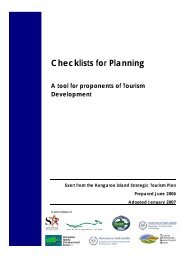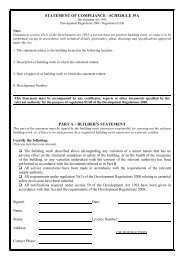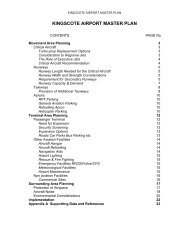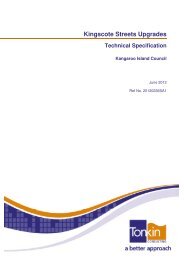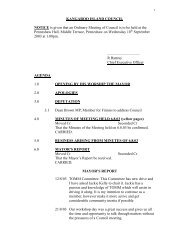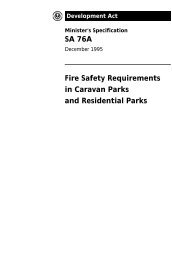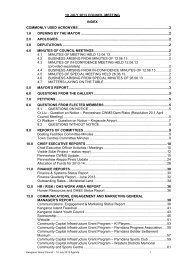KI Traveller's Levy Economic Impact Assessment - Kangaroo Island ...
KI Traveller's Levy Economic Impact Assessment - Kangaroo Island ...
KI Traveller's Levy Economic Impact Assessment - Kangaroo Island ...
Create successful ePaper yourself
Turn your PDF publications into a flip-book with our unique Google optimized e-Paper software.
Commercial-in-Confidence<br />
<strong>KI</strong> Traveller’s <strong>Levy</strong><br />
<strong>Impact</strong> <strong>Assessment</strong><br />
across the country are common, and several regions of high tourism activity have also<br />
introduced tourism levies on local businesses, or in some cases, directly on tourists.<br />
This section draws on several examples of such levies and charges, analysing how they are<br />
applied and, where possible, what the resulting impacts have been. Absent the application<br />
of statistical analysis, the conclusions which can be drawn in relation to the impacts are<br />
illustrative at best. The experiences of these examples are also drawn on throughout latter<br />
parts of this report to inform the analysis of a potential Traveller’s <strong>Levy</strong> on <strong>KI</strong>.<br />
1.4.1 NATIONAL PARK CHARGES<br />
Many of Australia’s national parks charge a vehicle entry fee as a mechanism for recovering<br />
the costs associated with, for example, maintaining and improving visitor facilities;<br />
conserving local fauna and their habitats; protecting sites of ecological or cultural significance<br />
and/or controlling pests. One such prominent example of this is Kakadu National Park in the<br />
Northern Territory.<br />
Kakadu National Park<br />
Entrance fees to Kakadu National Park have fluctuated markedly over recent years. In April<br />
2004, following a review into the fee scheme, entrance fees were increased from $16.25 to<br />
$25 to cover a shortfall in operating revenue. Then, in July that year, the Prime Minister<br />
declared that the entrance fees would be abolished from December, with operational<br />
expenditure funded through other vehicles. More recently, the Federal Government has<br />
announced that an entrance fee of $25 for all persons 16 years and over will be reintroduced<br />
from 1 July 2010.<br />
Assessing how these changes have impacted on tourist numbers is hampered not only by<br />
the host of other variables that impact on visitation, but by the absence of a time-series of<br />
quality visitor data. TRA suggests that visitation grew from 180,000 in 2003 to 276,000 in<br />
2005 before falling to 200,000 in 2007. However, data from the Department of Environment,<br />
Heritage, Water and the Arts, suggest visitation growing from 203,000 in 2005 (the earliest<br />
which data is publicly available) to 229,000 in 2008 – an average annual growth rate of 4.2%.<br />
1.4.2 TOURISM LEVIES<br />
A number of regions also raise revenue from the tourism industry through levies on tourism<br />
businesses – either through direct charges or increased local rates – or in isolated cases,<br />
directly on tourists. This section overviews three of the more prominent examples of tourism<br />
industry levies.<br />
Sunshine Coast Regional Council<br />
From 1 July 2009 the Sunshine Coast Regional Council (comprising regions previously<br />
covered by Caloundra City Council, Maroochy Shire Council and Noosa Shire Council) will<br />
issue a tourism levy on businesses in the region, subject to the business being considered<br />
one of the following:<br />
<br />
<br />
short term accommodation and iconic tourism; or<br />
commercial and industrial businesses.<br />
12


